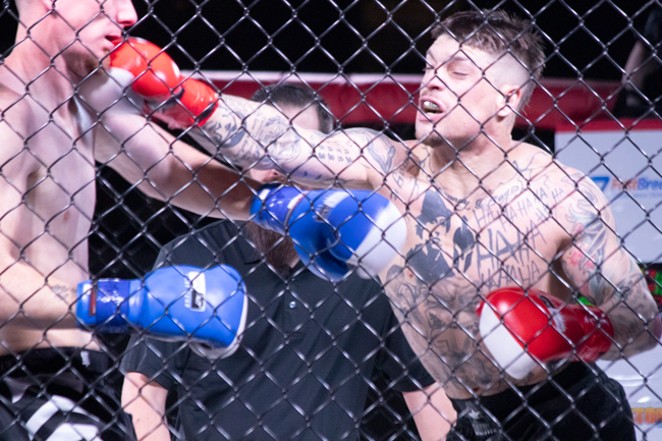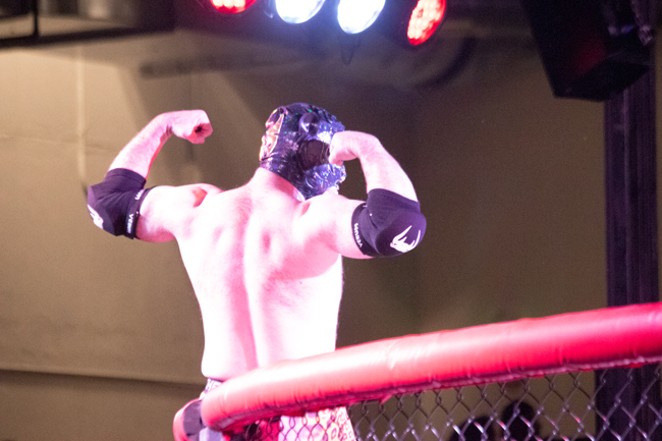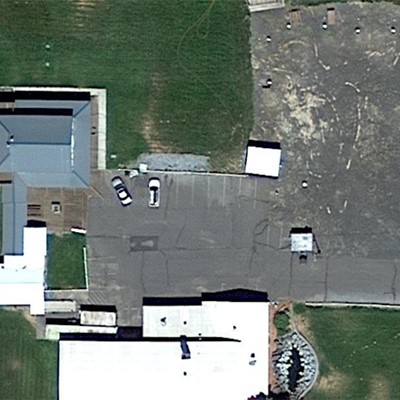In 1993 the world's oldest form of competition, fighting, found its way into the modern world with the broadcast of the Ultimate Fighting Championship 1. The early days of mixed martial arts weren't exactly mixed, and practitioners of specific martial arts squared off against one another to find the most effective form of fighting. Since its ragtag beginnings the UFC spawned a new outlook on martial arts—one that utilizes the best techniques from different styles to create the most well-rounded fighters.
The sport had to claw its way to the mainstream, sometimes for good reasons. The first UFC marketed their bouts with the tagline, "There are no rules," and it was nearly true. Head butting, hair pulling, groin strikes and fish-hooking were all fair play in the first few events, there were no rounds or weight classes, eye gouges and biting were one of the few things that were banned. By 1996, 36 states didn't allow organized mixed martial arts events after a campaign by Sen. John McCain (R-AZ) to end the sport in its infancy. Despite immense pressure, early adopters across the country fought in the ring and with statewide athletic commissions to legitimize the sport; in Central Oregon it was J.T. Taylor.
Taylor first encountered the sport as a teenager at Redmond High School while training in kickboxing and riding bulls. Deciding which sport to pursue, he opted for the one with human opponents and referees rather than 1,500 pound bovines and rodeo clowns. He took the same lesson many did from the first UFC fights and decided to train in Brazilian Jiu Jitsu, spending about a year with a local school before meeting his future coach, Marcelo Alonso, at a grappling tournament.
"I went to a tournament, and his team came down like the Cobra Kai walked in. He kicked the dog shit out of everybody and left us going, 'We don't know what we're doing,'" Taylor said. "I was right around 21 when I went to that tournament; his team beat us all and three days later I moved to Seattle to be on his team."
Taylor cut his teeth at Alonso's academy, and racked up an 11-0 amateur record before his first professional fight in 2001 against Ronald Jhun, a fighter who eventually reached the highest echelon of the sport in UFC 49. The match wasn't quite expected for Taylor; he was scheduled for the amateur card when someone had to fill in for a fighter on the main card. It would be his first loss in MMA, and his first time getting psyched out by an opponent.
"I'm in the locker room and here comes about 20 to 30 of his friends and family in my locker room praying for me, all speaking in tongues, putting their hands on me and praying for my safety," Taylor said. "I was so nervous I forgot my cup."
Jhun defeated Taylor in the second round via technical knockout from knee strikes. The loss didn't deter him, and in his next fight he got his first professional win against Ryan Schultz in a second round knockout. After a couple years in Seattle, Taylor started getting homesick and disillusioned with life in a big city. After 130 days straight of rain—more than four times as long as the Biblical flood, he points out—Taylor packed up and went home where he'd start Central Oregon's first promotion: Desert Brawl.

Desert Brawls
Taylor came back and started a Jiu Jitsu gym in 2002 and began promoting fights. He called his team the Desert Dogs and his promotion Desert Brawl. One of the attendees at early Desert Brawls would become Central Oregon's most accomplished native fighter, John Gunderson. Gunderson went on to compete in more Desert Brawls than any other fighter, and eventually reached the industry peak, fighting in three UFC fights.
"As soon as I'd seen my first MMA show, which was one of the very first Desert Brawls ever, I watched the show and I kind of fell in love with it," Gunderson said. "I started training and I feel like I learned quickly that you needed more than just boxing and being tough to be a good fighter."
When Taylor held the first Desert Brawl at the Bend Armory, the sport wasn't approved by what was then called the boxing commission, now the Oregon State Athletic Commission, and it forbade any MMA promoters from getting a promoter's license. The commission could fine promoters over $7,000 for every unlicensed event. Skirting the rules earned Taylor the first moniker he'd use in his career: "The Outlaw."
"They couldn't physically stop me, and they couldn't throw me in jail. They could only fine me. After seven-eight fights, you're in bed $80 grand. Are you gonna pay it back? Probably not. So it was all or nothing," Taylor said. "What I'm doing was not illegal, and on top of that, I was changing the surface, I instituted rounds, I instituted brakes, I brought doctors, I brought referees, I brought everything that the Commission is doing now."
Despite questionable legality, the show grew consistently. Starting from small warehouses, the event eventually would make its way to larger venues like the Deschutes County Fair and Expo Center.
"It was pretty cool to see that start so little. I was on the bottom of the card when I first started out in the Desert Brawls and I just worked my way up and I just kept fighting and fighting, and lots of people were there to watch me win and lots of people were there to watch me lose," Gunderson said.
The sport's popularity grew, and momentum from larger promotions like the UFC and Japan's Pride Fighting Championship transferred to smaller regional organizations. In 2004 the state athletic commission reassessed its ban on MMA promotions, just after Randy Couture, who trained out of Oregon, won the UFC Light Heavyweight Championship. With the rules changed, Taylor was left with $80,000 in fines and a bad taste in his mouth from OSAC's repeated attempts to shut his promotion down.
"The boxing commission brings me in in 2004, and they're like, 'We know we harassed you. We know we're in the wrong, too, but you were also in the wrong. And you have this bill with us. And in order to move on we have to get rid of it," Taylor said.
He walked out of their office with $2,000 fewer dollars, but a long-awaited promoters license. Taylor fought after getting his license, but in 2006 he decided to put down the gloves, at least for a bit.
"I fought Shonie Carter for the [World Extreme Cagefighting] world title. I made 500 bucks. He was the number 12 guy in the world at that time, and I just had my first son," Taylor said. "I had friends that were retiring at 30, so I was like, I'm going to retire and do some personal business events and promote fights."
Desert Brawl put on 26 shows between 2005 and 2011, when the promotion ended. Gunderson stuck around for a couple years, but eventually moved to Las Vegas to train under early UFC legend Frank Shamrock. Eventually Gunderson achieved his dream of fighting in the UFC after a tireless fight schedule and proving himself in promotions across the country.
"It's just the pinnacle of the sport, especially, I feel like when I made it there wasn't shows every weekend, the roster was small so they only took the best of the best, you had to be proven," Gunderson said. "Everything, from the production, to the way they treat you, to the paychecks. Everything is so much different."
At 34 Taylor took another shot at MMA, driven by both passion and a recession. When he stepped back in the ring the pay had gotten a little better, but the competition had gotten tougher. He had to ramp up his conditioning, but knew he wanted to fight before he aged out of the sport.
"I will remember what I didn't do, and that's what matters to me," he said. "That's really what it boiled down to, I wanted to fight the best people in the world."
Taylor fought his last fight in 2011, and finished his professional career with a 7-7-1 professional record. Since then Taylor started a hemp oil business that has stores in both Bend and Redmond. Another promotion, Budofights, has put on fights in Central Oregon, and last hosted an event in Central Oregon in 2018, but co-promoter Darrick Bruyn said they will be back with COVID regulations loosening.
The Future of MMA
Desert Brawl, of course, wasn't alone in promoting fights in Oregon. When MMA became legalized, UFC fighters such as Randy Couture, Chael Sonnen and Matt Lindland busted through the door with their own promotions. Dozens of promotions are still active, though coronavirus stalled them momentarily.
"It seemed like more and more of these small promotions were starting to pop up, and then the whole COVID regulation thing happened and that just completely shut everything down on the West Coast," said Mac Danzig, a Bend-based MMA trainer with a 13-fight career in the UFC as well as other elite and regional promotions.
Danzig opened his gym in 2018, just before the drought of MMA events. He said he caters more toward enthusiasts than people seeking to become elite-level fighters, because rising stars rarely have money for gym fees and need a lot of one-on-one training. When it comes to regional promotions in Oregon, he said it's good experience but getting to more elite promotions is a long and thankless process.
The ladder to the top requires beating someone with an impressive record, which can often come down to luck and access, before reaching mid-level events like the Dana White Contender Series. In the meantime, low-level pro fighters are lucky if they don't lose money with the costs of training, medical expenses and travel.
Others are more optimistic, though. John Gunderson, now a trainer for Las Vegas-based Syndicate MMA, sees the regional scene as thriving, at least where he is in Las Vegas. As statewide athletic commissions became more involved in the sport, it's made it more difficult, but there's still plenty of opportunity out there.
"There's not as many shows regional in certain areas, but I feel like there's bigger regional shows now that are covered on TV that were never covered before on TV, they're just bigger opportunities," Gunderson said.
Still, even in the UFC fighters are paid one of the lowest revenue shares of professional sports. The average UFC fighter made just under $150,000 in 2020 with a base salary and bonuses.
"The fighter pay issue is a big problem, but what's the bigger problem and is the root of that problem is that fighters who market themselves by creating fake conflict with other fighters, who just talk trash, are the ones who are making money," Danzig said.
Danzig, a technical master in MMA, prefers the sport over the spectacle. It's at odds with the average MMA fan, or at least whoever the UFC is marketed for. JT Taylor, on the other hand, is nostalgic for the more rough and tumble origins of mixed martial arts.
"We always had this circus, there was always jujitsu guys against karate guys, and that's really what made it fun," he said. "Honestly, this the sport is a spectacle and in some ways, needs to stay a spectacle because it's gotten to where there's no more of those matches anymore."


























